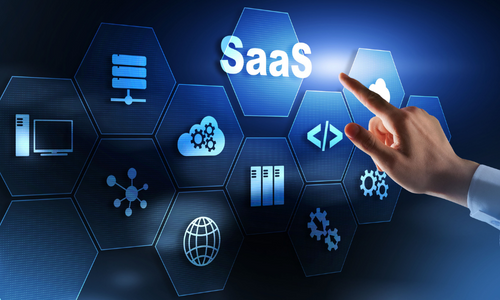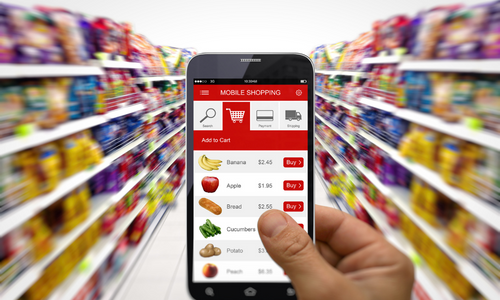
A promising startup is very crucial for a SaaS business. You need information about the tech stack to develop a SaaS app. In the presence of various options, people need clarification. We are here to help you select the suitable programming language for SaaS products.
This article will cover the following:
It’s a cloud computing service where people host applications remotely. Basically, they rent out the software instead of selling it. Users make subscription-based billing monthly or annually. It allows the users to access applications on software on web browsers.
The selection of programming language entirely depends upon your deliverables. Ask yourself the following questions:
You can select a programming language by finding the answers to these questions. However, programming language affects the overall structure of your application. So, an easy and simple programming language should be the first choice of developers.
The following are the most viable options:
Java is a decent choice if you have the right team on board. Java is a simple programming language used around the globe to develop several SaaS Apps. LinkedIn is also developed using Java.
Make sure that your team conveniently uses Java for coding and stuff. The Java operating system will also enable you to write codes in other languages. It is linked with java libraries.
Python is a viable option for developing desktop applications, web applications, and websites. It is a simple programming language. Many options of python libraries make it an excellent choice for creating SaaS applications.
Python is rich in features and has powerful functions to pursue the application development process. Its features and functionalities are enough to fulfill the advanced needs of web application developments.
PHP is considered one of the best python frameworks for SaaS. It is perfectly suitable for automation and helps you develop applications more easily. The easy-to-use functionalities make it helpful for beginners.
Ruby is considered a very suitable language for constructing different web-based applications. It gives access to many tools that help you to do the development process quickly and easily. Ruby also provides access to several libraries. Overall, it’s a viable option for development and interpretation.
Ruby on rails has a user-friendly interface. Its various benefits make it an ideal programming language for SaaS. It also enables users to do quick coding and high-speed interpretation. Specifically, Ruby on rail offers flexibility, and users can easily design unique and captivating applications.
Choosing a perfect programming language is essential. However, it depends on the requirements, desired product, and basic tools. So, select a programming language by keeping in view your key requirements. Some of the best and most viable options are mentioned, along with the necessary details.
Related Articles:

Do you want to start your business from scratch? Well, e-commerce platforms could be an amazing option for any entrepreneur. There are various options, but we have put together the best eCommerce platforms for you.
Minor differences in features, prices, and theme options can be game-changers for any business. So, let’s critically analyze the necessary details of each platform to find the one that best fits your requirements.
Our readers mostly like BigCommerce due to its attractive features and easy-to-use interface. However, some people are obsessed with Shopify for online business.
Each eCommerce platform mentioned below is best in its own unique way. Minor differences in features, prices, and integration options can bring a particular eCommerce platform to your priority list. Study this guide for further keen analysis.
Content
Shopify has been one of the top-ranked e-commerce platforms for the past few years. Shopify has maintained its top ranking in 2022 as well. One of the key reasons for its popularity is its easy-to-use interface.
The seamless integration of Shopify with other social media platforms makes it the first choice of many beginners. Integration options allow users to advertise their products on social media platforms, including Facebook and Instagram.
Shopify offers three monthly plans. The details of all three segments are as follows:
Users can get more advanced features and benefits on packages with higher prices. Basic Shopify is perfect for beginners who seek limited sales.
Woocommerce offers many customizable options for its users. It gives you complete independence to set up your online store upon your requirements.
WooCommerce is also a free and quick plug-in for WordPress. WooCommerce keeps updating the new features and themes for its users. Also, Its customizable options make things flexible for the users. Its integration with different plug-ins makes it a good choice for eCommerce experts.
The basic plan of wooCommerce is free for users. However, users have to pay 60$ for the premium features.
Wix has amazingly improved its interface and features in the past few years. Hence, it made its position in top-ranked eCommerce platforms. Wix also shows a customer support option on the main page to help its users.
Wix provides an easy-to-use interface. The drag-and-drop option for videos and photos is also an attractive element for new users.
Wait, what could be more interesting than 72 free themes? So, beginners can quickly get everything ready, which is good to do.
Wix has three types of the monthly plan described below:
Users can start with the basic one and move towards more professional plans to expand their online businesses.
BigCommerce is one of the emerging eCommerce platforms. Its user-friendly interface makes it the first choice for beginners. Beginners usually need to undergo simple training steps to start a business through Bigcommerce.
BigCommerce is rich in features and provides multiple leading templates to build an online store. A 14-day free trial is also attractive to test things. More pricing details are as follows:
The above plans are monthly basis pricing plans. You can choose one according to your requirements and budget.
Magento has lost its market share in the last few years. However, some people are still obsessed with its unique features. It provides many customizable options to its users. The customization gives the flexibility to mold things which is the preference of many users.
Well, it also allows its users to access the analytics through different tools. All these things are slightly technical and complicated for an ordinary person.
The program itself costs nothing. However, you have to pay for the things like domain names, extensions, tools, themes, and hosting. Magento’sMagento’s average theme cost is 30$. So, the monthly cost depends upon your business, sales volume, and additional features and tools.
Squarespace is an all-in-one package for many entrepreneurs. It has all those features anyone could look for to start and grow an online business. Squarespace is rich in features that attract and sustain the audience.
An easy-to-use interface is a dominating characteristic of this platform. Its designs and themes also inspire the users. It’s overall an excellent and attractive option for online business.
Squarespace offers four different monthly plans that include the following:
However, if you pay annually, you can get the following monthly plans:
Volusion has also made its place in top-ranked eCommerce platforms. It gives ease to design your website and pursue your online business seamlessly. Its reporting features are crucial to running a successful online business.
Volusion provides the functionality that will help you to create an attractive website. Its custom domain, content editor, themes, and other features let you pursue the business effectively.
Volusion offers four monthly pricing plans for its users.
You can get a 10% discount if you pay annually for any of the above monthly plans.
Most people know Square Online as Weebly. However, Weebly and Square Online are two different platforms now. Square Online is known for its user-friendly interface and attractive features.
The dashboard of Square Online is quite comprehensive. It displays all you need to find out on the interface. Built-in tools make it a decent option among eCommerce platforms.
Square Online offers a free basic plan, and the other three monthly plans are the following:
Plans
| Plans | Monthly billing | Annual Billing |
| Professional | 16$ | 12$ |
| Performance | 29$ | 26$ |
| Premium | 79$ | 72$ |
If you want to introduce your brand in an online market, Zyro could be a viable option. Zyro is free from complexities, and an ordinary user can easily understand its format and algorithm.
Zyro’s beginner-friendly features make it the first choice of many people. However, this platform is only feasible to obtain limited sales. Hence you can’t get an excellent profit ratio from monthly sales. It is a primary reason for its affordable monthly plans.
Zyro offers very affordable monthly plans starting from 2.90$. Following are the details of Zyro’s monthly plans:
Big Cartel is perfect for creative-minded website designers. It offers many customizable options, including customizable themes and templates. Its functionality is also interesting as it provides many marketing tools.
It limits the users to upload just five images of a product. Payment plans are according to the number of products a user can sell. Limited integration and payment options make it less attractive for some entrepreneurs. However, some users successfully operate their small online businesses on Big Cartel.
Big Cartel has a free plan for beginners and small business owners. Users can also test this platform by selling up to five products for free.
Gold plan: free; 5 products
Platinum plan: 9.99$; 50 products
Diamond Plan: 19.99$; 500 products
Shopwired is one of the emerging eCommerce platforms. Its features and functionality can stand out in the eCommerce market. Shopwired offers similar but competitive features set against other eCommerce platforms.
Well, its functions are also attractive for B2B eCommerce experts. They can use bulk product discounts to order inventory. In addition, user-friendly functions make it a good option as an eCommerce platform.
All plans are available with 14 days free trial. Following are the pricing details of each monthly plan:
PrestaShop is one of the open-source eCommerce platforms. It is an affordable option for starting an eCommerce business.
You may need some technical knowledge to run a business successfully on PrestaShop. It doesn’t have any built-in integration option. However, you can control the privacy and security settings to some extent.
PrestaShop offers a free plan which is entirely free to download and use without any monthly fee.
3DCart is a comprehensive eCommerce platform. 3D cart is also known as Shift4Shop. It has some most demanding features like marketing and integration features. It allows its users to sell unlimited products.
3DCart enables users to sell physical and digital products. Users can access the necessary selling option on cell phones as well. Integration with Facebook, google shopping, eBay, and Amazon make it a comprehensive platform. However, some 3Dcart still need some exciting features.
3DCart provides the following monthly pricing plans:
Weebly is a well-known eCommerce platform. Users can access it through mobile phone applications on android and iOS. Weebly’sWeebly’s free plan is available with limited features. However, its paid plans come with many exciting options.
Its marketing automation feature is incredible. The marketing automation feature is only available in the paid plans. The paid plans are also affordable. So, users can run an online business cost-effectively.
A free plan is available for users. The rest of the pricing plans are as follows:
Ecwid offers a free plan that comes with good selling options. However, paid plans have more attractive features. Paid users can access others through mobile phone applications. It also provides good integration options.
Besides all the benefits, Ecwid’s features and functionality could be more powerful. The major drawback is some limitations in design and templates.
Ecwid offers three monthly pricing plans besides the free one.
Shopify, WooCommerce, and BigCommerce are actual competitors of each other. Each platform has a loyal user community. However, each platform mentioned above adds value to the online business market.
Shopify is our top pick due to its combination of features and integration options. Readers can choose a platform by considering the pricing, convenience, and business requirements.
Related Articles:

Many businesses are shifting their system to the cloud to meet the current business standards. But wait, we have several options regarding the cloud. So, a critical analysis of SaaS vs. PaaS will help you make a better choice.
We have summed up all essential details concerning two different models of cloud services. This information will help you understand the features of cloud models. Let’s study the details to analyze each model.
This article will cover the following:
SaaS is an abbreviation of software as a service. It is the most common cloud computing service model. It allows users to access different software on web browsers. So, users can install or download the software without using SaaS. It also manages and hosts the applications and software for its users.
Examples: Google workspace, Slack, Zoom, Dropbox, WebEx
SaaS provides the following key features to its users:
SaaS provides the following top four benefits to its users:
SaaS doesn’t only provide easy access to different features of applications and software. You can also uniquely use various functions of applications by customizing them.
SaaS provides direct access to different software, eliminating installation, updating, and managing costs. Many applications also offer a free trial for up to a specific period, letting the users try it before investing money.
Applications are easier to access and handle through the SaaS cloud model. Users can open any concerned interface on any browser. It’s impressive to get the best features and templates effortlessly. Most importantly, you can test those features before actually buying them.
You can use current versions of applications through a subscription-based billing system. Traditional models don’t let you use updated versions. Users need to buy and install it before using a particular software. However, SaaS enables you to use updated features of each app and software at a lower cost.
Despite its multiple benefits, SaaS also has the following limitations:
PaaS (Platform as a Service) is a cloud service model that lets the users develop, manage and maintain different applications. Users can get a third-party server on board for networking services and data storage to create and customize various applications.
Examples: OpenShift, Heroku, Force.com, Windows Azure,
PaaS has the following key characteristics:
PaaS offers the following benefits for its users:
PaaS has some limitations that can become challenges for the users. Its disadvantages include the following:
SaaS (Software as a service) and PaaS (Platform as a service) are cloud service models. PaaS is usually used for application and software development. However, PaaS gives you direct access to applications and software on web browsers.
For instance, your team wants to design a new application to handle your client’s activities. Then, PaaS will serve your needs by allowing you to develop an application that fulfills your requirements. Once you have created an application, SaaS will enable you to use that application to perform your daily tasks.
SaaS and PaaS serve various needs of their users. Users should choose a model by keeping in view their essential requirements. Many organizations also use multiple models to fulfill their different needs.
Well, cloud service models are part of emerging business tactics. So, this article will help you get information about the two basic cloud models.
Related Articles: